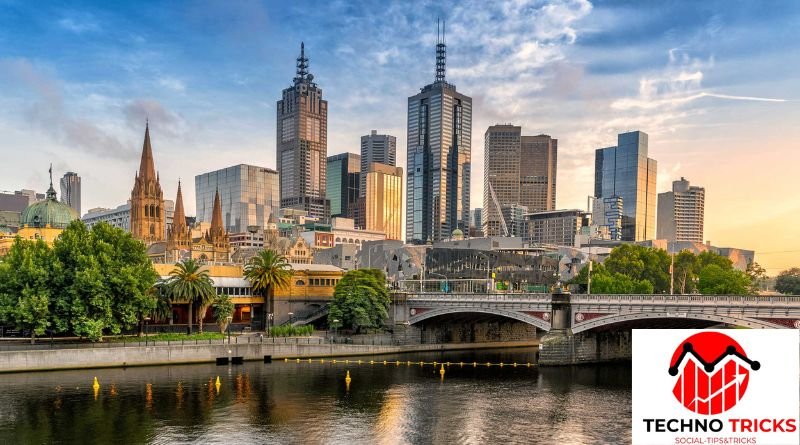Melbourne Property Market Forecast for 2025
The Melbourne property market is one of Australia’s most dynamic and influential real estate sectors. As the second-largest city in the country, Melbourne continues to draw both local and international attention for its strong property market performance. As we approach 2025, many property buyers, investors, and industry experts are eager to understand what lies ahead for the market. In this article, we will examine key factors, trends, and predictions for the Melbourne property market in 2025, offering insights into what stakeholders can expect in terms of property values, demand, and investment opportunities.
Current State of the Melbourne Property Market
Before delving into future predictions, it’s essential to take a snapshot of where the Melbourne property market stands today. Over the past few years, Melbourne has experienced significant growth in property prices, particularly in the inner-city suburbs and sought-after areas like the CBD, Southbank, and Richmond. This growth, however, has been affected by external factors such as interest rates, government regulations, and the broader economic climate.
In recent years, the market has seen fluctuations, largely due to the impact of the COVID-19 pandemic. The onset of the pandemic caused an initial dip in property values, with many people opting for flexible, work-from-home arrangements and reconsidering their living situations. However, the market showed resilience, bouncing back quickly as the economy recovered. This resilience can be attributed to several factors, including Melbourne’s appeal as a multicultural city, strong employment opportunities, and the consistent demand for housing.
Key Factors Influencing the Melbourne Property Market in 2025
To understand the direction of the Melbourne property market in 2025, it’s important to consider the key factors that will play a significant role in shaping market conditions. These factors include interest rates, supply and demand, government policies, infrastructure development, and global economic trends.
Interest Rates and the Lending Environment
Interest rates have long been a critical determinant of property market performance in Australia. In recent years, the Reserve Bank of Australia (RBA) has kept interest rates low to stimulate economic recovery. As we approach 2025, many experts anticipate that interest rates may begin to rise slightly. This could have a direct impact on the property market, particularly for first-time buyers and investors who rely on borrowing.
Higher interest rates could lead to reduced borrowing capacity, making it more difficult for some buyers to enter the market. However, for existing homeowners, rising interest rates may encourage refinancing or prompt some to sell their properties if they can no longer afford higher repayments. For investors, the increased cost of borrowing could affect their return on investment, prompting some to reconsider their property holdings.
Supply and Demand
Melbourne has faced an ongoing challenge with housing supply in recent years. The city’s rapid population growth and high demand for housing, combined with limited land availability in desirable areas, have contributed to the rising property prices. However, the construction of new homes and apartments has been sluggish in some areas due to zoning restrictions, planning delays, and other barriers.
As Melbourne’s population continues to grow, it will be essential to address these supply challenges. In 2025, we may see an increase in residential construction, particularly in the outer suburbs and new housing estates. Additionally, the trend of apartment living in Melbourne is expected to continue, with developers seeking opportunities to build high-density residential buildings in and around the CBD and other urban centers.
Government Policies and Regulations
Government policies play a critical role in shaping the Melbourne property market. In 2025, ongoing policy changes may influence both the supply and demand sides of the market. Some potential policy developments include changes to stamp duty, first-home buyer incentives, and new regulations for foreign investors.
Additionally, the government’s approach to housing affordability will be a key factor. Efforts to make housing more affordable for young Australians, such as the First Home Buyer Deposit Scheme and changes to the superannuation system to allow for house deposits, may encourage more first-time buyers to enter the market.
Furthermore, Melbourne’s state and local governments may continue to focus on urban regeneration projects and infrastructure development to improve access to housing in high-demand areas.
Melbourne Property Market Trends to Watch in 2025
Several key trends will likely define the Melbourne property market in 2025. These trends can help investors, homeowners, and industry professionals understand what to expect in terms of property prices, demand, and investment potential.
Suburban Shift and Regional Growth
One of the most significant trends in recent years has been the shift towards suburban living, driven by factors such as affordability, space requirements, and lifestyle preferences. This trend is expected to continue in 2025, with an increasing number of buyers opting for properties in Melbourne’s outer suburbs or regional areas. The rise of remote work and the desire for more spacious homes with larger yards have encouraged many people to seek properties in these areas.
As the Melbourne CBD becomes more crowded and expensive, areas such as Wyndham, Melton, and the Mornington Peninsula are gaining popularity. These regions offer more affordable property options while still being within commuting distance of the city. With infrastructure improvements, including better transport links and amenities, these areas are poised for significant growth in 2025.
Technology and Smart Homes
Technology is rapidly transforming the real estate industry, and this trend is expected to accelerate in the coming years. In 2025, we may see a greater demand for smart homes equipped with advanced technology that enhances comfort, security, and energy efficiency. Buyers and renters will increasingly look for properties with features such as automated lighting, climate control, and integrated security systems.
Developers and homeowners who incorporate these technologies into their properties may find themselves better positioned in the market, as the demand for high-tech living spaces continues to rise.
Sustainability and Eco-Friendly Properties
As environmental concerns continue to grow, sustainability is becoming an increasingly important consideration for both buyers and investors. In 2025, the Melbourne property market is likely to see a greater focus on eco-friendly and energy-efficient properties. This could include homes with solar panels, energy-efficient appliances, water-saving systems, and sustainable building materials.
Government regulations and incentives aimed at reducing carbon emissions may also drive the demand for sustainable homes. Buyers and investors will increasingly prioritize properties that align with their environmental values and offer long-term savings on energy bills.
Melbourne Property Market Outlook for 2025: Predictions
Given the factors mentioned above, several predictions can be made about the Melbourne property market in 2025:
- Continued Price Growth: While property prices in Melbourne are expected to rise in the medium to long term, the pace of growth may slow down compared to previous years. Rising interest rates and affordability constraints may temper some of the price growth, but strong demand for housing will continue to drive up values, especially in desirable areas.
- Increased Investment in Regional Areas: As more people move to the suburbs and regional areas, there will likely be increased interest from investors seeking rental properties outside of the CBD. These regions offer potential for strong rental yields and long-term capital growth, making them attractive investment opportunities.
- A Focus on Sustainability: Properties with sustainable features will become more desirable, with buyers willing to pay a premium for energy-efficient homes. Developers who embrace green building practices and energy-efficient technologies will have a competitive advantage in the market.
- Changing Demographics: The Melbourne property market will see a shift in demographics, with more young people and families seeking affordable housing in the outer suburbs. This shift will also lead to an increased demand for townhouses and apartments with larger living spaces, which accommodate the needs of these buyers.
- Technological Innovations: Technology will continue to shape the real estate market in 2025. From virtual property tours to smart home features, technological advancements will influence how buyers search for and experience properties.
Conclusion
The Melbourne property market in 2025 will be shaped by a combination of economic factors, demographic shifts, and evolving buyer preferences. While there are challenges to overcome, such as rising interest rates and housing affordability, the market will continue to offer opportunities for growth and investment. By staying informed about these trends and forecasts, property buyers, investors, and industry professionals can make better decisions and navigate the evolving market landscape.
In summary, Melbourne’s property market is expected to experience steady growth in 2025, with increasing demand for properties in suburban and regional areas, a focus on sustainability, and the continued rise of technology in real estate. Whether you are a first-time buyer, an experienced investor, or someone looking to sell, understanding these trends will be crucial to making informed decisions in the years ahead.
May Also Read: thetechnotricks




